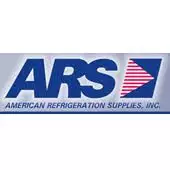How to Test Start and Run Capacitors for HVAC and Refrigeration Systems
What is a capacitor
 A capacitor is an electrical device which stores an electrical charge. They are typically used in HVAC systems on fan motors and compressors. In an HVAC system there are typically 2 types of capacitors which are used. Start capacitors are used to provide extra torque to compressors during start-up. After the compressor is started, a potential relay disconnects the capacitor from the compressor. Run capacitors are used to provide a relatively constant voltage supply to fan motors and compressors. Run capacitors also increase torque during start-up.
A capacitor is an electrical device which stores an electrical charge. They are typically used in HVAC systems on fan motors and compressors. In an HVAC system there are typically 2 types of capacitors which are used. Start capacitors are used to provide extra torque to compressors during start-up. After the compressor is started, a potential relay disconnects the capacitor from the compressor. Run capacitors are used to provide a relatively constant voltage supply to fan motors and compressors. Run capacitors also increase torque during start-up.
Capacitors have 2 electrical ratings of importance, voltage and capacitance. Capacitors typically found in HVAC systems are typically rated for 370vac, 440vac or dual voltage (370vac and 440vac). The capacitance is measured inmicrofarads (mfd) and is available in a wide range of ratings. It is extremely important to install a capacitor with the correct specs to prevent premature failure.
Caution – Capacitors can hold a voltage charge for long periods of time. To prevent getting shocked, the capacitor must be discharged before removal. If you are unsure how to safely and properly discharge the capacitor please consult a qualified technician.
Testing Capacitors
There are multiple methods which will work for testing both start and run capacitors. The first method can be performed without removing the wires from the capacitor.
- Using an amp probe, record the amperage of the motor or compressor that the capacitor is feeding.
- Using a multi-meter, record the voltage between the 2 terminals of the capacitor.
- Use the following formula to calculate current capacitance: [(Amperage x 2650) / voltage] = current capacitance
- Compare your calculated capacitance to the rating stamped on the capacitor. If they are relatively close then the capacitor is good.
The second method requires the wiring to be removed from the capacitor. Failing the following test means the capacitor is bad, however, passing this test does not necessarily mean that the capacitor will perform under load.
- Discharge the capacitor.
- Disconnect the wires from the capacitor terminals.
- Using a non-auto-ranging meter set to its highest range; connect the ohmmeter leads to the capacitor. Observe polarity if electrolytic.
- The meter should start at 0 ohms and slowly climb to infinity.
- Reverse the leads and the ohms should slowly decline to 0 ohms.



























































































